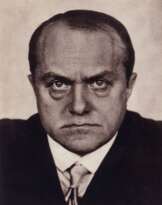Wilhelm Schnarrenberger (1892 - 1966)

Wilhelm Schnarrenberger
Wilhelm Schnarrenberger was a German painter and representative of the New Objectivity movement.
Schnarrenberger studied graphics at the Munich School of Applied Arts, as well as architecture. After his studies, the artist received commissions for publications in the magazines Das Plakat or Simplicissimus as well as numerous illustrations for publishing houses. At the same time, Schnarrenberger also began to work as a painter and participated in the exhibitions of the New Munich Secession. After the Expressionist phase, his painting was replaced by an increasingly distinct style, which in 1925 became known as Neue Sachlichkeit ("New Objectivity"). In 1920, the artist was appointed to teach commercial art at the Badisches Landeschool in Karlsruhe, where he later became a professor.
As a result of the Nazis' rise to power, Schnarrenberger lost his professorship and moved to Berlin. In 1937, Wilhelm Schnarrenberger's paintings were recognized as degenerate and he was persecuted. After the end of the war, he was allowed to resume his professorship and was appointed professor at the Karlsruhe State Academy of Fine Arts. He became a member of the Badische Secession and received the Hans Thom State Prize in 1962.
| Date and place of birt: | 30 june 1892, Buchen (Odenwald), Germany |
|---|---|
| Date and place of death: | 12 april 1966, Karlsruhe, Germany |
| Nationality: | Germany |
| Period of activity: | XX century |
| Specialization: | Artist, Educator, Painter |
| Art school / group: | New Artists' Association Munich |
| Genre: | Genre art, Landscape painting, Portrait, Still life |
| Art style: | Degenerate art, Expressionism, New Objectivity |




































